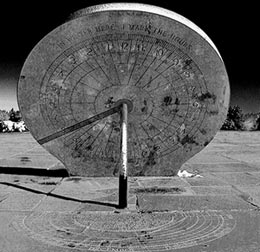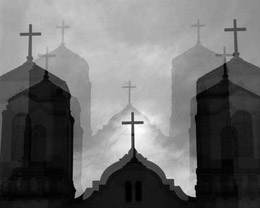
Copyright © James Austin
Q: What is the best part of Flickr?
A: Yes, (smiling). It’s funny, that’s kinda like asking “What is art?”. No one knows. Here is one small answer to the question.
The best part of Flickr is its infinite number of rooms. A giant folksonomous house–each room in Flickr has an infinite number of doors. You can travel through any of them. To go freely, picture-lovers, like Hobbits, needs to speak the right password. Like Frodo in Lord of the Rings, you must “Speak Friend and enter”. To move about you must give awards, comments, and advice to other picture lovers on their images. This helps them find the doors to your little room. The best part of Flickr, maybe, is that the house itself flies through an image cosmos so large and so varied that any picture topic can find a room.
For example, visit Flickr and put in any topic in its search engine, like say, great white egrets. 29,000 images will be listed, ordered by something called “interestingness.” Now, I have no idea what “intestingness” is, but I’ve seen some unbelievably stunning pictures of great egrets there.
Q: What do you mean by “Speak Friend and enter.”
A: To get along in Flickr, it helps to be friendly and to be a resource. When you look at other’s pictures, you can leave awards and upbeat comments to encourage their ideas. These awards lead others back to your own pictures, and they leave comments in your room. If you are not polite your comments can be erased.

Copyright © James Austin
Q: Is Flickr addictive?
A: Yes, the friendships you make with other picture-lovers keeps you coming back. Flickr is a social democracy of visual ecstasy.
Another excellent part of Flickr is its hidden treasures from public photography galleries that Flickr has assembled. The George Eastman House, Library of Congress in Washington DC, and the Smithsonian are just a few of the archives on Flickr.
Q: How do I get around in Flickr?
A: Every picture has links around it, like a funhouse with an infinite number of doors. To open them, you do not need to be a web person, or a pro, or worry at all. All you have to do is hit a few keys and click some icons. You journey begins as you upload pictures. Your pictures fill your gallery room. You can leave your room in the funhouse at any time to look at the play of other picture lovers.

Copyright © James Austin
Q : Do you have to send pictures to Flickr?
A: No, you can upload any hd video, video, graphics, type or image that has been digitized, in pixels. You can be a painter, graphic artist, or musician, as long as you like to upload pixel-based images.
Q: Why not just go to a photo gallery?
A: With Flickr, you have free access to more pictures in a single day, than you’ll see in a year of visits to a museum or gallery.
Q: With so many pictures in that infinity you talked about, how can other people find your pictures?
A: You can invite them directly. Also, every one of your images, and your comments on other people’s images, is accompanied by your avatar, or personal mark. You set up a profile to describe yourself, and this can be as public or as private as you want. If you geotag your pictures, or add descriptive tags, it might make it easier for buyers to find your pictures. Most people find my pictures from off-Flickr search engines. For example, they use Google images or Yahoo, and when they search for a topic, they get linked to a Flickr page.

Copyright © James Austin
Q: What about film? If I’m a film photographer am I excluded?
A: Film photographers are alive and thriving in the Flickr funhouse, and have many groups, such as the bw film groups and a Fuji Velvia group. There are many groups for Polaroid film shooters. I mention that because Polaroid film will return in 2010.
Q: Is Flickr totally non – commercial?
A: No, Getty and Yahoo are using it to make money with a stock image bank. I have a “Sold and Published” set on Flickr and use it to promote my photography. I’ve also sold an image to The New Yorker Magazine through Flickr.
Q: How fast does Flickr change?
A: Faster than you can blink. Flickr is a stream of consciousness: you can stop the stream and gaze at one image in the river. You can hit the “go to warp” button in your own head and visit as many images as fast as you can click a mouse. It’s like watching points of light turn into a light speed blur. If you don’t do anything, the Flickr house still moves faster and faster as more images are uploaded every micro-second.

Copyright © James Austin
Q: Is there a time limit to Flickr?
A: It’s timeless. There are no clocks. Once you are in the flow, you lose all sense of modern time. Your membership, for uploading additional pictures, lasts for one year.
Q: Is there a “dark side’ of the Flickr force?
A: Yes. De-humanization–like, when you comment on somebody’s picture, it’s pretty easy to forget that there is a person in that room next door on Flickr that’s going to react to your thoughts. . . and when you leave an award to them for their picture, or write a comment, it’s possible to use only automated comments and awards. These don’t need any thought at all. This automatic awarding process can take the personal touch out of the process, so much so that some members delete the awards others leave, because they find them just visual clutter.
Also, I foresee that Yahoo might develop a “Royal Flickr” that charges a lot more for membership.
Q: What can a Flickr member do about this dark side?
A: Perhaps by trying to be creative, and consciously mindful, you can try to travel in Flickr as a seeker of knowledge, whether it is intuitive and esthetic, or conceptual and scientific. For instance, there is a group on Flickr called Scientist Photographers and one for Nano Imaging.
Q: Where can I find other opinions of what Flickr is?
A: Flickr is an image and video hosting website, web services suite, and online community platform.
Q: Where is Flickr?
A: www.flickr.com
Jim Austin, M.A., A.C.E., Answers the Questions

Leave a Reply